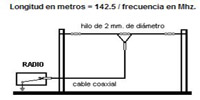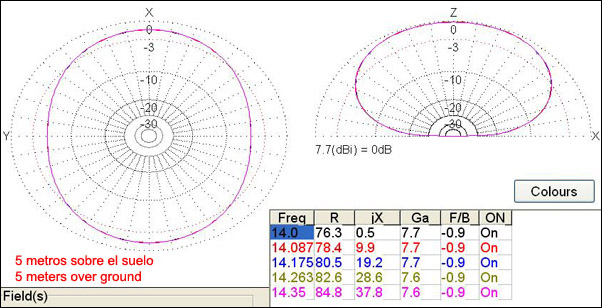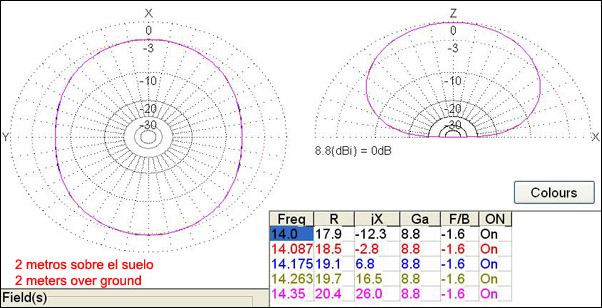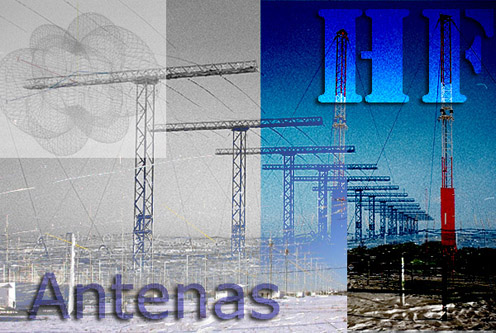Horizontal dipole
Main → HF Radio Resource Center → HF Antennas → Horizontal dipole |
![]() Este artículo también está disponible en Español (this article is also available in Spanish).
Este artículo también está disponible en Español (this article is also available in Spanish).
![]() Abstract:
Abstract:
This article describes the characteristics of an horizontal dipole and shows the results of several simulations made with MMANA-GAL, covering models for the 20 m, 40 m and 80 m bands. The goal of the simulations is to study the optimum height to install the dipole in order to work in NVIS (Near Vertical Incident Skywave).
 |
Type: Horizontal dipole |
| Design: REMER | |
| Impedance: 50 ohm | |
| Simulation: MMANA-GAL | Band: Single band |
Remarks: Leg lenght, meters = 142,5 / (F MHz) |
|
Dipole for 20 m |
Dipole for 40 m Dipolo_horiz_40m.maa |
Dipole for 80 m Dipolo_horiz_80m.maa |
Simulation report for the 20 m dipole Dipolo_horiz_20m_Vademecum_Report.pdf |
1. Design and antenna modeling.
The fig.1 shows the horizontal dipole modeled in MMANA-GAL, laid along the "Y" axis.

The horizontal dipole has two arms with a total length calculated as L = ( 142,5 / Frequency MHz), and is built using wire of 2 mm in diameter. The table 1 shows the lenghts to be used in the 20 m, 40 m and 80 m bands.
| Band | Leg length (m) |
|---|---|
| 20 m | 5,089 |
| 40 m | 10,178 |
| 80 m | 20,357 |
2. Radiation patterns.
The patterns shown in this section belong to a dipole for the 20 m band, being quite similar for the rest of bands. The pattern is bidirectional with radiation lobes perpendicular to the antenna's axis and the maximum gain is 2,12 dBi.
The fig.2 shows the radiation pattern of the dipole installed at a height equal to 1/4 of the wavelength.

The fig.3 shows the radiation pattern of the dipole installed at a height equal to 1/10 of the wavelength.

The optimum height over ground for NVIS operation is equal at 1/10 of the working wavelength, in which case an antenna coupler may be necessary. Increase this height for DX operation.
The table 2 shows the optimal heigths to install the dipole working NVIS in different bands.
| Band | Height over ground (m) |
|---|---|
| 20 m | 2,1 |
| 40 m | 4,2 |
| 80 m | 7,8 |
Ismael Pellejero - EA4FSI |
 EA4FSI Home |
HF Antennas TOC |
HF Central |

